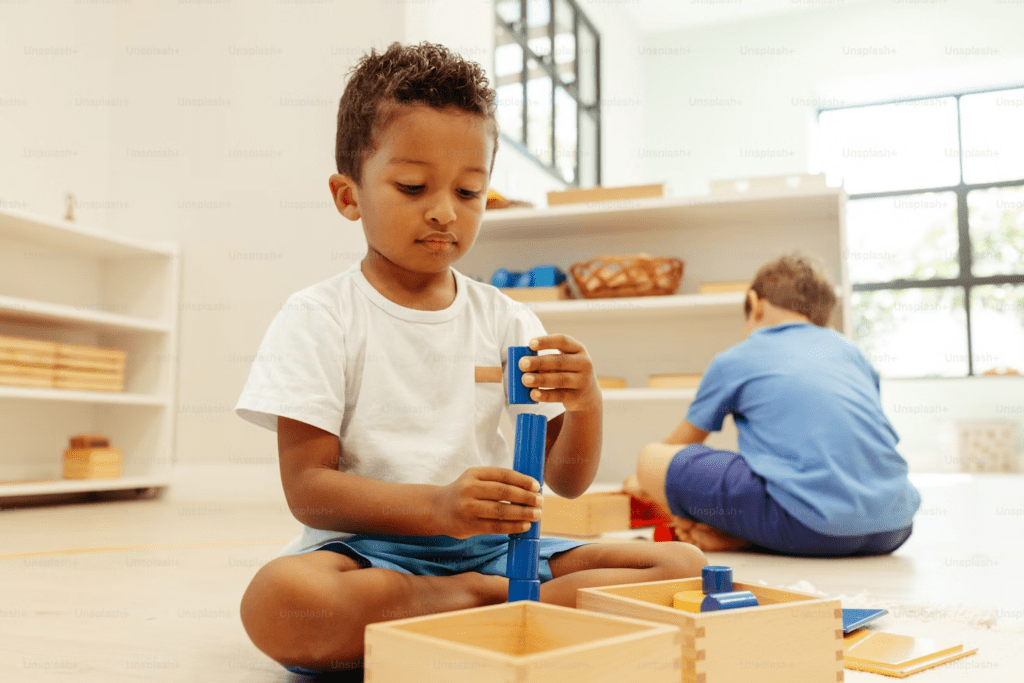When Do Kids Start Playing Together?

Introduction
As parents, one of the most exciting milestones is when your child begins to interact with others. But when exactly do kids start playing together? While this isn’t just about fun and games, it’s a crucial part of social development that lays the foundation for how they connect with people throughout their lives. From the early days of observing antique toys and collectibles to more involved play with educational toys for toddlers like Moover wooden toys, each stage children play is a step towards building friendships and learning valuable social skills. Let’s dive into the fascinating journey of play development, helping you provide the proper support with tools like wooden baby doll strollers and puzzles at every stage.
6 Stages of Play Development
Understanding the six stages of play development is vital to supporting early childhood growth. Each stage, from solitary play with wooden baby doll strollers to cooperative adventures with Moover wooden toys, represents a significant leap in cognitive, social, and emotional skills. These stages help us tailor environments with suitable toys, like educational toys for toddlers or intricate wooden puzzles, ensuring children have fun and develop essential life skills. Let’s explore these stages deeply, seeing how play evolves from newborn to school-age children.
Unoccupied Play (Birth-3 Months)
In the earliest months of life, babies engage in what is known as unoccupied play. Though it might look like little more than random movements and stretches, we must encourage unoccupied play for their initial motor development. During this period, babies explore their bodies and the effects of their actions on the world around them, and this is where subtle educational toys for toddlers, like soft mobiles above the crib or gently textured mats, play a vital role. These items encourage sensory exploration and motor skills without overwhelming your little one. It’s the quiet beginning of a lifelong journey of learning and discovery.
Solitary Play (Birth-2 Years)
Children from birth to about two years old engage predominantly in solitary play, which is when they play alone, exploring and learning about the world at their own pace. It’s a critical period for developing independence and imagination. During solitary play, children often form attachments to favorite toys, like a cherished wooden baby doll stroller or their first set of Moover wooden toys. These same toys entertain and help toddlers develop fine motor skills and cognitive abilities. Encouraging this type of play with age-appropriate toys, like when you buy wooden puzzles, can significantly enhance their learning and personal growth.
Spectator/Onlooker Behavior (2 Years)
At around two years old, children often exhibit what’s known as spectator or onlooker behavior. This stage is fascinating as toddlers begin to show interest in other children’s play but do not join in. Instead, they watch and learn from the sidelines, absorbing how their peers interact with toys and each other. This behavior is crucial as it lays the groundwork for social skills and later interactive play. Encouraging this observational stage with visits to playgrounds or providing diverse toys, like antique toys and collectibles, can enrich their understanding of different play styles and behaviors. It’s a passive yet deeply educational phase where they’re gearing up for more active participation.
Parallel Play (2+ Years)
As children reach the age of two, they begin engaging in parallel play, a stage where they play alongside other children without direct interaction. This form of play might look like they’re just sharing space, but it’s crucial for developing respect for others’ activities and an understanding of shared environments. During parallel play, kids use similar toys without cooperating directly, like building side-by-side with blocks or pushing Moover wooden toys around the same play area. This stage is vital for gradually easing children into more complex social interactions that come later. Providing a variety of shared toys, like wooden puzzles, can foster this crucial developmental step.
Associate Play (3-4 Years)
Between the ages of three and four, children enter the associative play stage, where their interactions with peers become more involved and intentional. Compared to parallel play, associate play sees children start to share toys and ideas, though still needing to cooperate on a shared goal fully, and this is when interactions like taking turns with a wooden baby doll stroller or building a castle together from blocks begin to take shape. Encouraging this form of play with versatile toys, such as Moover wooden toys, can significantly enhance their communication and develop social skills. It’s a delightful period where children explore the joys of shared experiences, setting the stage for more complex group play.
Cooperative Play (4+ Years)
By age four, children are ready to engage in cooperative play, a stage where they actively collaborate and work towards a common goal. This form of play is fundamental for teaching kids about teamwork, sharing responsibilities, and resolving conflicts. Activities like organizing a tea party with a wooden baby doll stroller or constructing a large structure using blocks are typical scenarios where cooperative strategies are employed. Tools like Moover wooden toys can significantly enrich this playtime, allowing children to express creativity while learning to negotiate and cooperate with their peers. It’s a vibrant phase of a child’s development where friendships blossom and they hone social skills.
Conclusion
Understanding the stages of play development helps you nurture your child’s growth from solitary baby activities to dynamic group play. Each stage builds on the last, fostering vital skills that prepare them for lifelong learning and interaction. At Goats on the Move, we’re committed to supporting every step with educational toys for toddlers, antique toys, and collectibles that inspire imagination and social development. Encourage these formative play experiences with our carefully selected toys, and watch as your child thrives in a world of creative and collaborative play.

